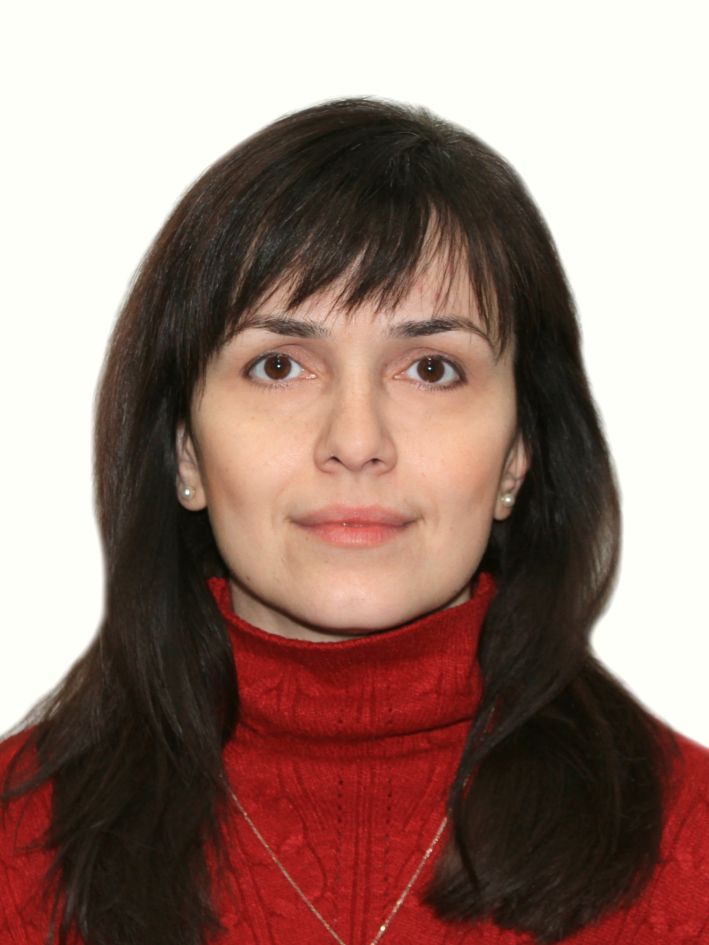Khrystyna Slivinska-Kurchak
@new.meduniv.lviv.ua
Department of pediatrics and neonatology for postgraduate study
Danylo Halytskyj Lviv National Medical University
RESEARCH, TEACHING, or OTHER INTERESTS
Medicine, Pediatrics, Perinatology and Child Health, Cardiology and Cardiovascular Medicine
3
Scopus Publications
Scopus Publications
- Hematohidrosis in Pediatric Practice – a Case Report and Review of the Literature
Oksana Matsyura, Lesya Besh, Svitlana Jefimova, Khrystyna Slivinska-Kurchak, and Sergiy Gerasymov
Vilnius University Press
Hematohidrosis (bloody sweat) is a symptom of trophic damage to the vascular wall, in which sweat mixes with blood and seeps onto undamaged areas of the skin in the form of red or pink liquid (depending on the ratio of sweat to blood). In our study we have analyzed 25 case reports of hematohidrosis in children, reported throughout the world using PubMed, ResearchGate with detailed description and opened access. We took into consideration: age of the patient, sex, location of bloody excretion, cause or trigger, treatment and its effectiveness.Our clinical case present a 9-year-old girl complained of a periodic bleeding from the intact skin of the face, neck, thighs (without visible damage to the skin) manifested by red or pink liquid, nosebleeds, and bloody discharge from the mucous membrane of the eyes. The secretions were of varying intensity and lasted up to several hours. Most of all episodes are associated with a strong emotional exertion. One of the theories of hematohidrosis pathogenesis is evident vasoconstriction of the blood vessels surrounding the sweat glands, provoked by hyperactivation of the sympathetic nervous system, which is followed by their excessive vasodilation up to rupture and blood entering the sweat gland ducts. Capillary endothelial cells are known to contain β2-adrenoceptors, which, through the modulation of nitric oxide release, cause endothelium-dependent vasodilation. Blocking β-adrenoceptors (for example, propranolol) prevents excessive vasodilation of blood vessels and, accordingly, their rupture and blood flow to the sweat gland.We managed to find out that the patient’s bloody sweat was a manifestation of a separate pathological phenomenon, and not one of the symptoms of another disease. A properly formed treatment complex and the great trust of the parents enabled to stabilize the child’s condition, and later to cure her. Currently, hematohidrosis is recognized as an independent disease that requires in-depth study of the triggering mechanisms of development, pathogenetic and clinical features. - First-degree atrioventricular block in 14-year-old child due to Lyme disease
Halyna Lytvyn, Natella Basa, Khrystyna Slivinska-Kurchak, and Iryna Avramenko
Journal of Infection in Developing Countries
Lyme disease is an infectious disease caused by bacteria of the Borrelia burgdorferi sensu lato (Bbsl) complex and is characterized by predominant lesions of the skin, cardiovascular system, nervous system and musculoskeletal system. We have described a clinical case of first-degree atrioventricular block in a 14-year-old boy caused by Lyme borreliosis. The disease started with the manifestations of cardiovascular system involvement. The patient and his parents did not recall observing a tick bite or manifestation of erythema migrans (EM). The boy was prescribed doxycycline. Three weeks after antibiotic therapy a second ECG examination was performed and showed no abnormalities. - Diagnostic predictors of tolerance development in the elimination diet in children with cow's milk protein allergy
Oksana Matsyura, , Lesya Besh, Natalia Lukyanenko, Oksana Kovalska, Khrystyna Slivinska-Kurchak, Yaryna Nagurna, , , ,et al.
Danylo Halytskyi Lviv National Medical University
Background. Cow's milk protein allergy is a topical issue in pediatrics. This disease affects 2-3% of young children. Methods. The study included 30 children with a confirmed cow’s milk protein allergy and a prescribed milk elimination diet. The children were observed for 36 months. The molecular profile was evaluated by detecting the major components of milk (Bos d 8, Bos d 5, Bos d 4), minor (Bos d 6), and cross-reactive with serum albumin (Fel d 2, Can f 3). Results. The study group included 46.7% of boys. The mean age of the subjects was 14.5±3.18 months. Nine of the 25 analyzed factors were identified in the course of our work by the method of logistic regression with progressive selection, which in combined action affect the formation of tolerance to cow's milk proteins in allergic children. There are three clinical examples of calculating the prediction of the complete tolerance development in the elimination diet in children with cow's milk protein allergy. Conclusions. Independent predictors that reduce the likelihood of the tolerance development in the elimination diet, have identified: skin test to milk, Bos d 8, Bos d 5, Bos d 4, Bos d 6. Independent predictors of the tolerance development in the elimination diet are: milk-specific IgE, total IgE, Fel d 2, Can f 3. Low probability of tolerance development by elimination therapy is a recommendation for prescribing treatment to a patient by specific oral tolerance induction.

